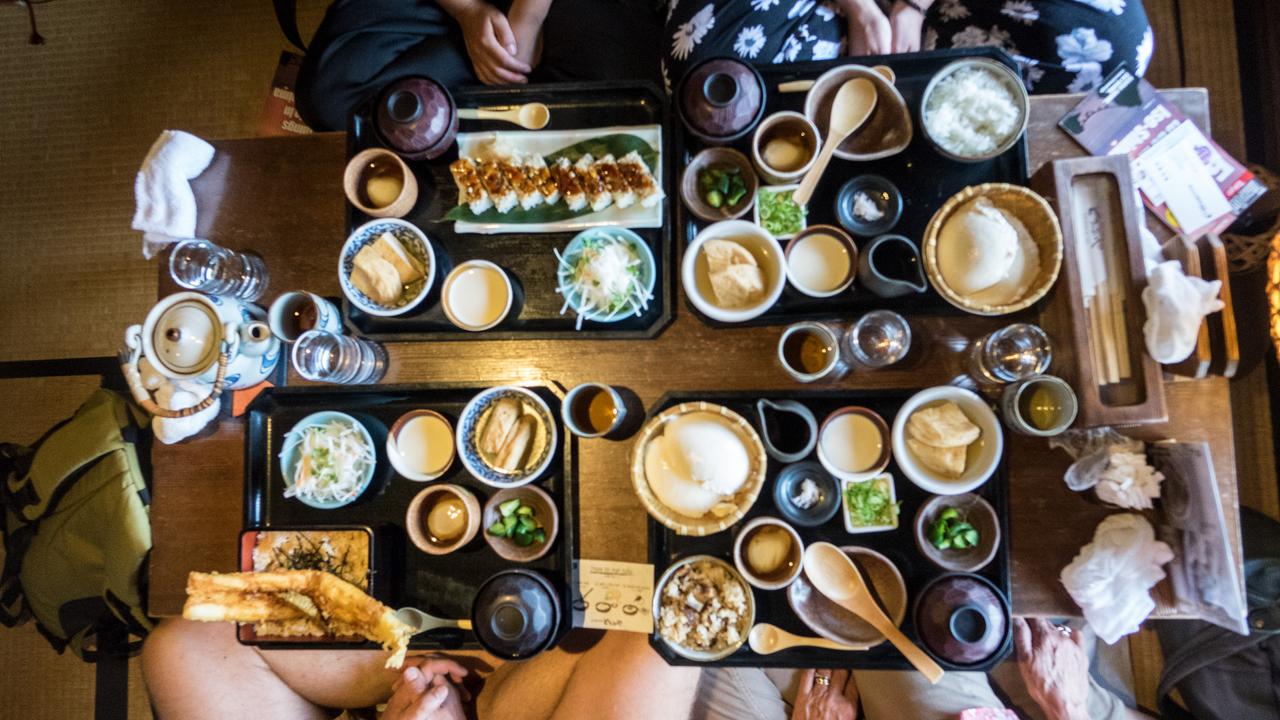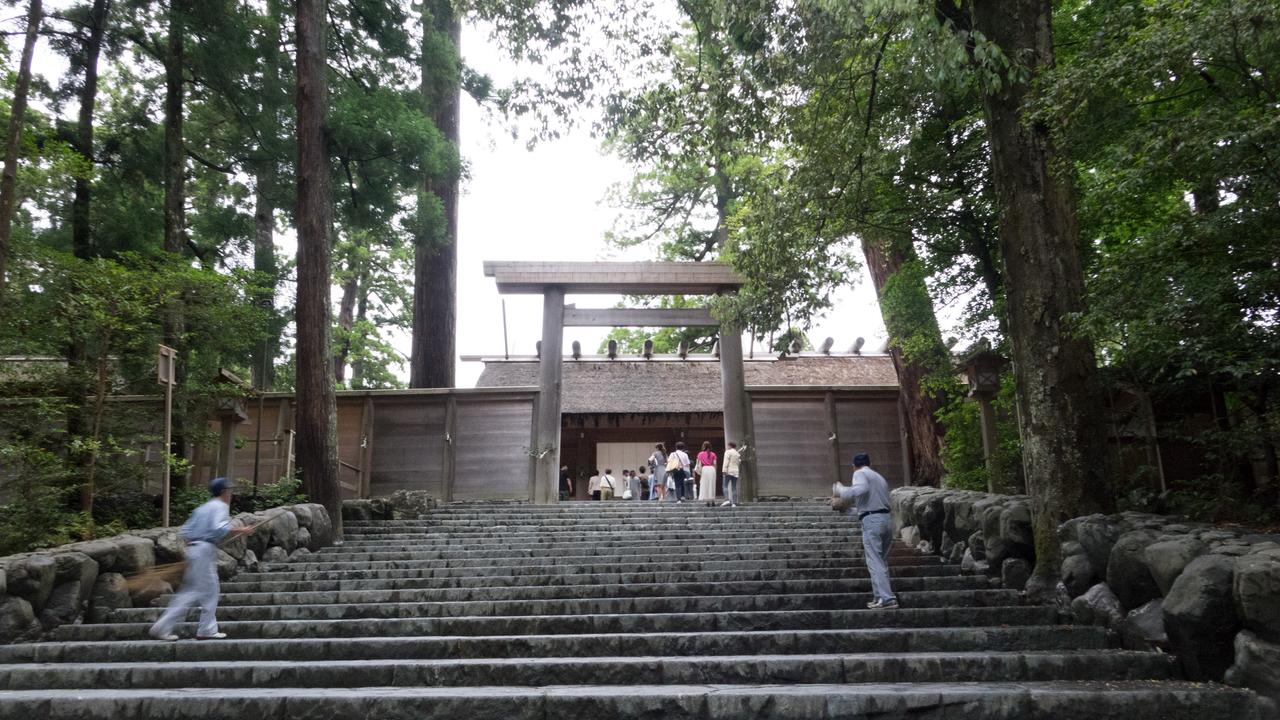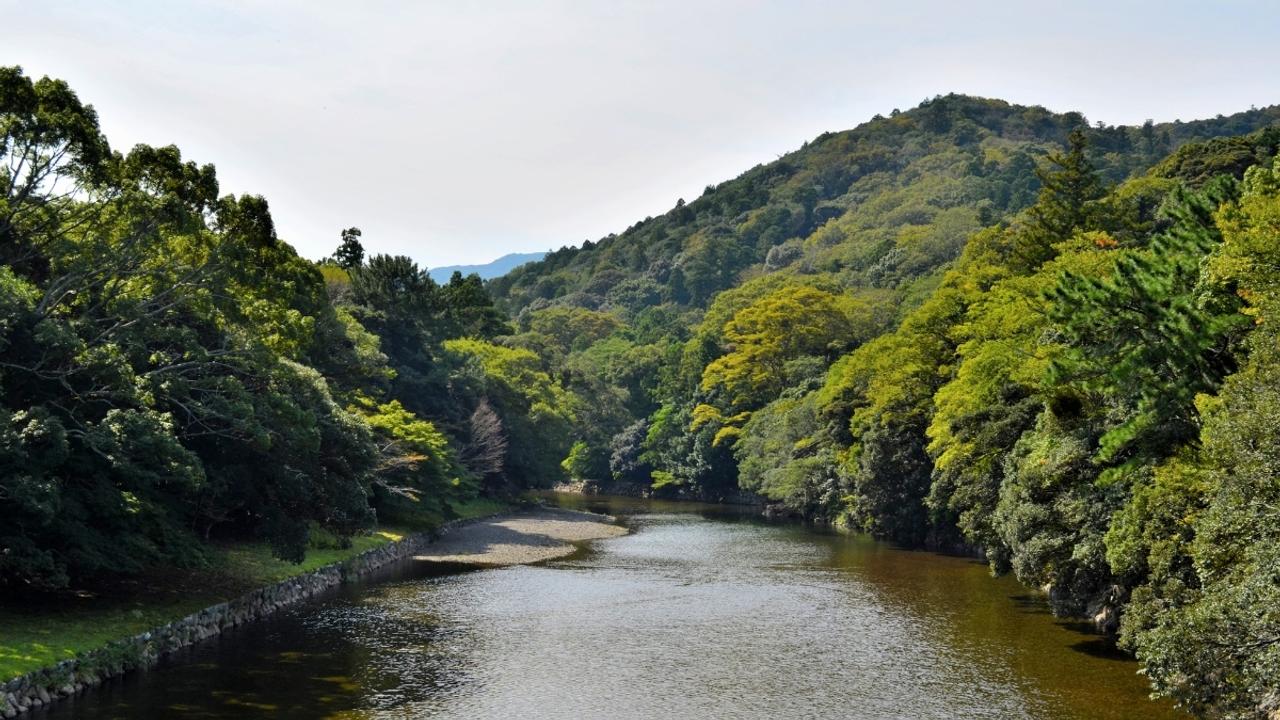Following Ancient Trails
Weaving through Japan’s southern Kansai region are the Kumano Kodo, a number of ancient pilgrimage trails that converge on the three Kumano Sanzan Shinto shrines. These routes are 1000s of years old and were contrived to be challenging, even dangerous, to better enhance the spiritual experience. Many of the paths are now gone forever, lost to development or neglect, but there are still several original trails to follow.
Wander along these ancient routes bathing in the cool, dappled forest light. Enjoy the hospitality of local families along the way, experience random acts of thoughtfulness from strangers, and rest in characterful hotels. It’s all part of what makes these trips away from the bright lights so memorable.
There is a tendency to see Japan through Tokyo’s slick, sophisticated and ever-forward-looking lens, but there are many other facets to this enriching country that come to life when you explore its rural regions.
A serene and meditative walking tour such as this can be part of a larger itinerary, forming an effective contrast to the nearby Kansai cities, or can be the centre of a trip in its own right. We’ve finely tuned this experience over the years and know how to balance moments of urban excitement with long stretches of immersion in the beauty of Japan’s different landscapes.
Finding nature in Megalopolis
Though you’re headed for rural solitude, starting your walking-themed itinerary in one of the world’s largest cities is sort of unavoidable. Unless you touch down in Osaka, your arrival point will be Tokyo. It’s dense, compact and efficient, and in places feels like there’s no space or level that has been left unused. But among the glass, steel, asphalt and concrete are hidden green breathing spaces, sometimes quite large ones, often several levels above the ground. Things have calmed down somewhat from the relentless development of decades gone by and Tokyo is now peppered with pockets of sprouting green.
You might choose to see the city through a contemporary historic focus, delving into the lively Shitamachi District with its subtle domestic delights (including lots of balconies, flower pots and cats!) Walk among the temples or grand museums of Ueno Park, or the subculture hubs of Harajuku or Akihabara. One of our favourite ways to end the day is with a quality evening food tour, discovering the different flavours of Japanese cuisine and filling up on delicious dishes as you wander.
Something beautiful
Leave behind the constant rush of Tokyo for Nagano Prefecture. Kamikochi, meaning ‘the place where gods descended’ is a travel highlight for any that revel in the majesty of mountains, gin-clear rivers, and natural spirituality. When the mist ascends, you can make out the written kanji on the trail signs and see the cluster of restaurants serving soba noodles and traditional alpine food.
It is pristine, spiritual, and perfect for a 2-night stay. Walk the numerous trails and enjoy the serenity of your accommodation, whether you choose a traditional ryokan or a contemporary summer villa. The iconic Kappabashi Bridge, spanning the Azusa River, is named after the mythical, mischievous Kappa: the frog-like water spirits of local legend. When the crowds have left, and you sit down to dinner by the waterside, the light descends and the scene becomes magical. There is a strong argument for preceding your stay here with a night in nearby Matsumoto, should you have the time. Soak up the delights of this interesting city with its scenic old merchants’ district and, arguably, the most satisfying castle in Japan.
Post to post
Nagano’s stunning landscape is sometimes compared to that of Colorado or the Peak District. It’s home to Japan’s Central Alps and there are some breathtaking mountain panoramas to discover. Make your way to Kiso Valley, the scene of a lovely, longish walk between two immaculately preserved Edo-era towns, where the accommodation is a real highlight.
You’ll typically be staying in a minshuku, which is similar to a ryokan but with more of a family-run B&B feel. Enjoy warm hospitality and either a delicately prepared feast or a hearty, country-style dinner. The walk itself is a glorious journey between two traditional, dark-wood-latticed towns nestled in the mountains. Hike through forests and past waterfalls, fields and farmhouses, glimpsing daily village life. It is a lovely, slightly softer trek than Kamikochi, with more rolling countryside than steep mountains to tackle.
The one you may have been waiting for...
Kyoto provides a wonderful counterpoint to Tokyo, and a different take on a large Japanese city. It’s a hub for traditional dining, particularly multi-course kaiseki banquets and exquisite tea ceremonies, but also for high-quality, modern cuisine from around the world. This sought after destination is a cache of priceless wonders that always attracts large numbers of visitors, and the centre is rather compact and very walkable. You’ll be keen to see the town’s stand-out sites, but it’s worth taking time to research which ones catch your interest the most, as it’s not ideal to try and get round all of them in one visit.
Kyoto rewards slow immersion. It's worth spending a few days here and taking the chance to do some outer-area exploration as well. See the city by bike during the day, and take wander in Gion in the evening among the traditional geisha and maiko san. Perhaps head to Japan’s largest lake, Biwako, stopping by with a local family for lunch, or pause in Pontocho, and enjoy excellent riverside dining. Kyoto makes a great base for exploring further afield too, with Nara, Kobe and Himeji, with its extraordinary castle, all within easy reach for day trips.
Ancient trails
This is it, the central focus of your trip: a pilgrimage along the Kumano Kodo, one of Japan’s most famous ancient trails. You might be after a bit of solitude after the crowds of Kyoto, and Yunomine Onsen delivers just that. Relax a little at your ryokan, soak in the onsen, and enjoy delicious traditional dinners. Walk around the delightful town and, if you are feeling a little peckish, buy a pre-dinner egg to dip in the community cooking onsen.
Get plenty of rest and relax in preparation for the next few days’ hiking. We recommend a 3-night stay so that you can experience a full day of Kumano Kodo trekking, and even longer hikes if you’re keen. These trails aren’t too challenging, so open to walkers of varying experience, and offer more delightful wanders through the Japanese countryside where traditional accommodation is a key ingredient. Stay in a ryokan or traditional hotels, making the most of the onsite onsen, so that by the time you finish you might feel as if you’re returning from a spa break rather than a walking trip! Finish up in the fishing town of Katsuura, and get up early to see the catch come in on the quayside.
Diving for pearls
Known as Japan’s most sacred city, Ise’s sense of tradition and spirituality runs deep. At its heart is the Ise-Jingu Shrine - one of the country’s most revered Shinto spaces - standing watch over a town that feels like it could never be hurried. Despite being a popular spot that gets pretty busy during peak season, there’s a kind of permanent stillness and purity to Ise’s shrines and surrounding forest that cuts through the noise, reflecting its significance as a prominent pilgrimage site. Pause here to tune in to Japan’s ancient sense of self.
There’s more than a sprinkling of folklore magic to Ise too, with Ise-Shima being home to Japan’s real-life mermaids: the Ama divers. These extraordinary women have been free-diving for seafood from Ise’s rocky coast for generations, and bringing precious pearls to the surface as a bonus, for which they have become world renowned. Enjoy some locally-caught seafood and stories in a local Ama diving hut, and learn about the history and techniques of this 2,000-year-old practice. Wander around the charming Mikimoto Pearl Museum to discover more about the tradition, and head to Yokoyama Viewpoint to look out over the coast and contemplate the enduring allure and beauty of the pearls cultivated beneath the waves.
‘Doki doki suru’
The above phrase means ‘to approach something with nervous but thrilling excitement’, like a bungee jump, literally with your heart pounding. This is how we feel every time we arrive in Osaka. It’s very much a party town, and can feel like arriving in another country when coming back from the calmness of the Kumano Kodo. At this point, when your trip is winding down, is the time to let loose a little. Focus on eating and drinking in this foodie haven and soak up the viscerally relaxed attitude that pervades this legendary city.
In terms of food, you can get more or less anything you want, but the city’s speciality is fried, casual snacks, the most famous of which is takoyaki (fried octopus dough balls). Laced with delectable sauce, sprinkled with nori and finished with a dollop of mayonnaise, they are utterly delicious, served fiercely hot straight from the fryer, and ready to be eaten on the go. Go out and celebrate your trip in this, Japan’s friendliest city.
A note on cost…
The guide price of £6,690US$8,690 is a per person price (not including international flights) staying a total of 3 nights in Tokyo, 2 nights in Kamikochi, 2 nights on the Nakesendo Way, 3 nights in Kyoto, 3 nights walking the Kumano Kodo, 2 nights around Ise and 1 night in Osaka; all in our favourite mid-range hotels & traditional inns.
The exact shape of your trip is up to you - our tailor-made specialists work with you to create your perfect journey.













